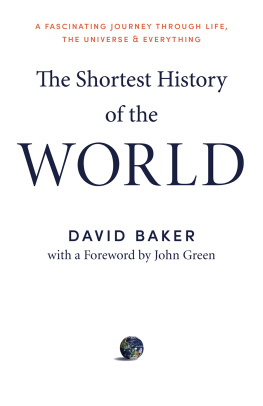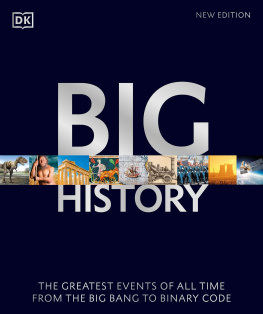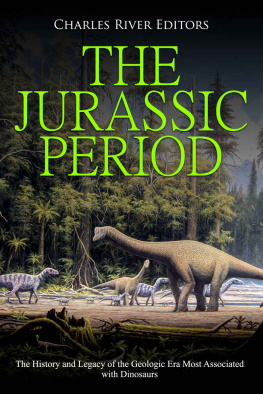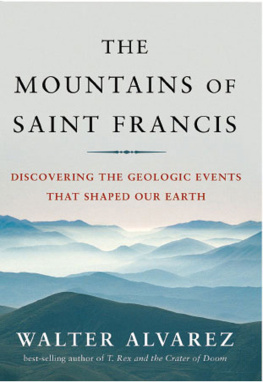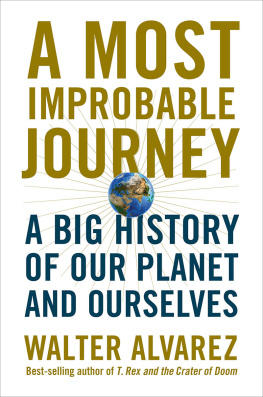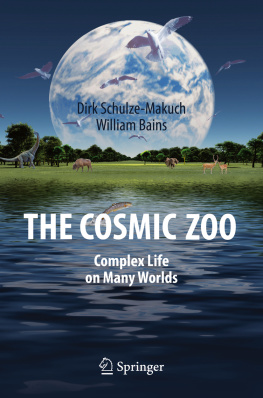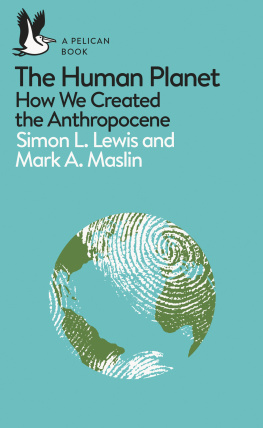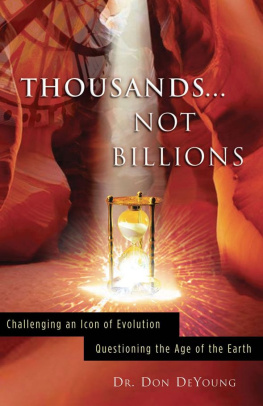Table of Contents


A Most Improbable Journey is dedicated
to the memory of Jack Repcheck
a dear friend, the best publisher an author could hope for,
a fine author himself, a historian, a musician, and
a good and decent man who lived his life well.
This is Jacks book, too, though tragically
he did not live to see it finished.
Requiescat in pace.
Contents
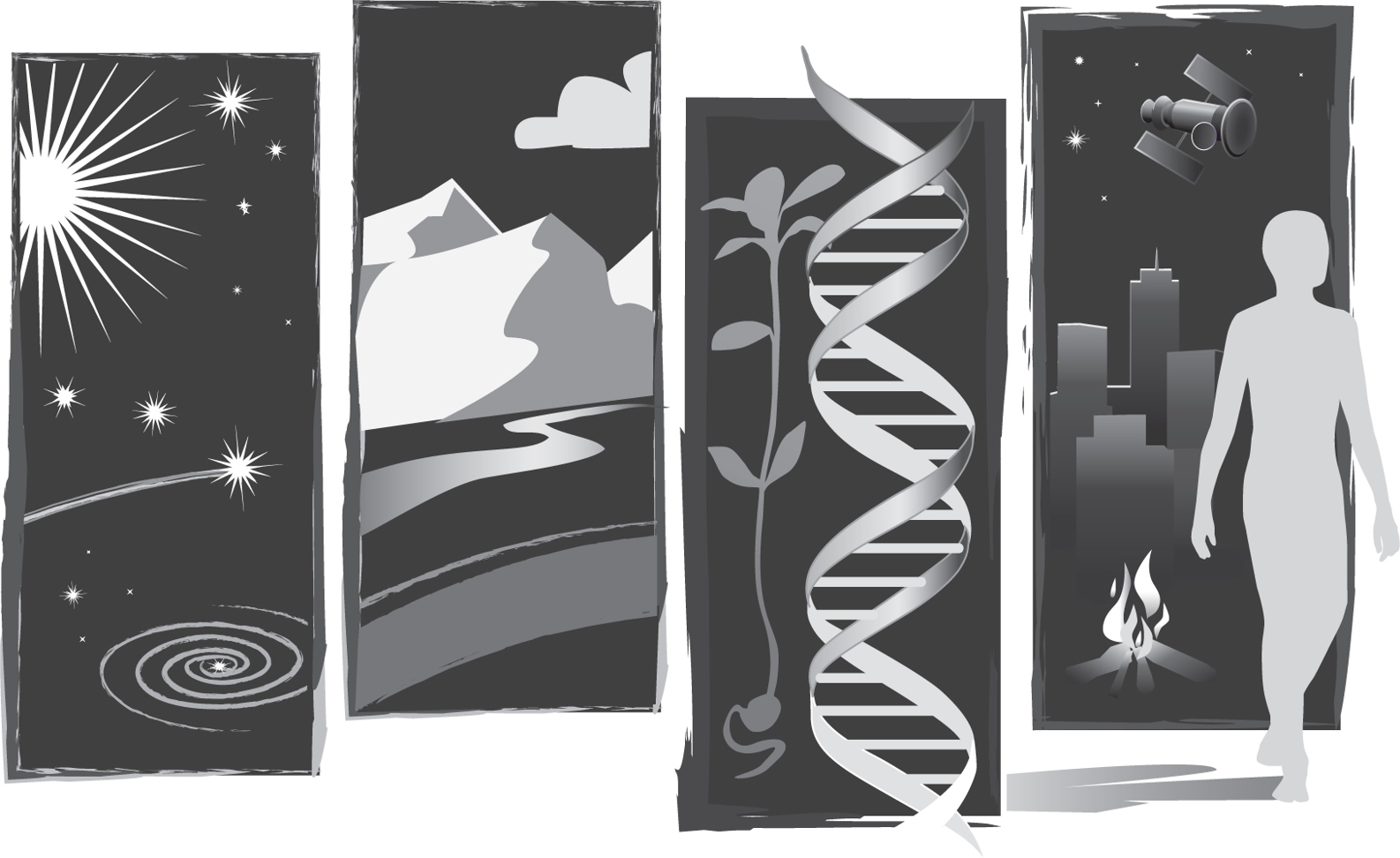
T HINK FOR A moment about the human situation we live inthe solar system and our planet; the continents, oceans, and landscapes; the animals and plants; the nations, governments, and businesses; all the languages, cultures, and beliefs; our particular city or town; our family and all the people we know. How did all this come to be? To understand the human situation we need to consider the history that has produced it.
However, for those of us who are fascinated by history, most of the books we read are quite specializedtheir subjects are restricted in time and space. We may find books about the French Revolution, the American Civil War, the Ming Dynasty in China, or the Spanish discovery and colonization of Latin America. From focused books like these, it is hard to see how everything fits together. To counter this kind of specialization, there are also books dealing with World Historyunifying all of the human past on a global basis.
But to a historical scientist like mea geologistor to a paleontologist or an astronomer or an archaeologist, even a book about World History is narrowly restricted in time and space! Right now historical scientists are delighting in the discovery of an enormous history, reaching back billions of years into the past, and stretching across a vast universe of which we are simply one local neighborhood. Our human history is only part of the story of the past, although a fascinating part indeed.
The broader history of everything might seem irrelevant to someone interested in human history, but it is not. The human situation in which we find ourselves is the result of a history that has unfolded across enormous stretches of time and space, and almost everything that has taken place in human history has been strongly influenced by events deeper in the past.
Those of us who are interested in understanding the entire past now call this panoramic viewpoint Big History. I like to think of Big History as combining four regimesCosmos, Earth, Life, and Humanity. Each of the four regimes is filled with fascinating stories that help us understand what it is to be a human being, living in our particular world, and not some other kind of creature living in some other place.
For me, the astonishing realization that comes from the study of Big History is just how unlikely our world is. At innumerable points in its history, events could have led to totally different resultsto a human situation completely different from what we know today or to a world with no humans at all. Our history has been A Most Improbable Journey, and that will be the through-going theme of this book.
The first three regimes of Big History are the subject of scientific research, not humanistic scholarship, and so they may be less familiar to those who read history for pleasure. My goal in this book is to make all that prehuman history accessible and easily comprehensible, no matter what your background is in humanities or science. Although there is a continuity from chapter to chapter, feel free to read them in any order that interests you. If A Most Improbable Journey leaves you with a greatly expanded view of what history is about, with a new appreciation of the human situation, with a delight in a whole series of fascinating stories, and with a lot of new questions, then it will have been a success.
Welcome to Big History!
AN EXPEDITION TO MEXICO
I T DID NOT start out like an unforgettable daythat Tuesday in February of 1991 in the lowlands of eastern Mexico. It started out with two broken-down jeeps and a whole load of trouble getting even one of them fixed. By the time we were able to leave Ciudad Victoria for the field, it was afternoon and a good bit of our last day was already gone. Jan, Sandro, and I, along with a post-doc named Nicola, were trying to find ancient debris ejected from the recently discovered Chicxulub Crater in the Yucatn Peninsula, several hundred miles away. We believed that the crater had been formed by a huge object from space striking the surfaceprobably an asteroid but possibly a comet. We had already spent three days in a fruitless search for the ejecta all across northeastern Mexico, and it looked like one final day of frustration awaited us.
About 12 years earlier, the young Dutch geologist, Jan Smit, and I had independently discovered unexpectedly high concentrations of the element iridium in a clay layer that separates sedimentary rocks of Cretaceous and Tertiary ages.
Jan and I had become close colleagues and friends in the decade or so of intense scientific argument over whether the impact hypothesis was correct. Even though evidence kept piling up in support of an impact 66 million years ago, skeptics demanded to know where the crater was located. If our impact hypothesis was correct, there had to be a crater somewhere. But no one could find it.
One line of evidence was particularly compelling. Sandro Montanari, a young Italian geologist who did his PhD with me, discovered tiny round objectshe called them spherulesin the sedimentary layer that marks the Cretaceous-Tertiary boundary in Italy. Jan also found them in Spain, so together we published an interpretation that has held up ever since: These spherules were formed from droplets of rock that had been melted by the heat of the impact, were ejected from the impact crater, left Earths atmosphere and traveled long distances in ballistic free fall before reentering the atmosphere and falling back to Earth. The spherules provided very strong evidence for a huge impact but still did not answer the question of where the crater was located.
Now, at last, there was a candidate crater, and we had come to Mexico to put it to the test.
MIMBRAL QUEST
Something like half of all the genera of plants and animals living on Earth 66 million years ago perished in the great mass extinction that geologists use to mark the Cretaceous-Tertiary boundarythe most recent of six mass extinction events that have punctuated life history. Jan, Sandro, and I, as well as a number of other geologists studying the Cretaceous-Tertiary boundary, were proposing that the extinction was caused by a huge impact, and most geologists and paleontologists did not like it at all. Our idea went completely against their uniformitarian training.
What was uniformitarian training? Charles Lyell, an early English geologist, had argued forcefully in the 1830s that all changes in Earths past have been slow and gradual. This doctrine is called Uniformitarianism, and by the twentieth century, it was treasured and defended by geologists everywhere. Our theory was a direct threat to Uniformitarianism. Nicola Swinburne, the post-doc who was with us on that February day, had done her PhD in England where geologists were particularly sensitive to threats to Uniformitarianism. She would remain skeptical of the impact hypothesis, despite the amazing evidence we were about to find.


